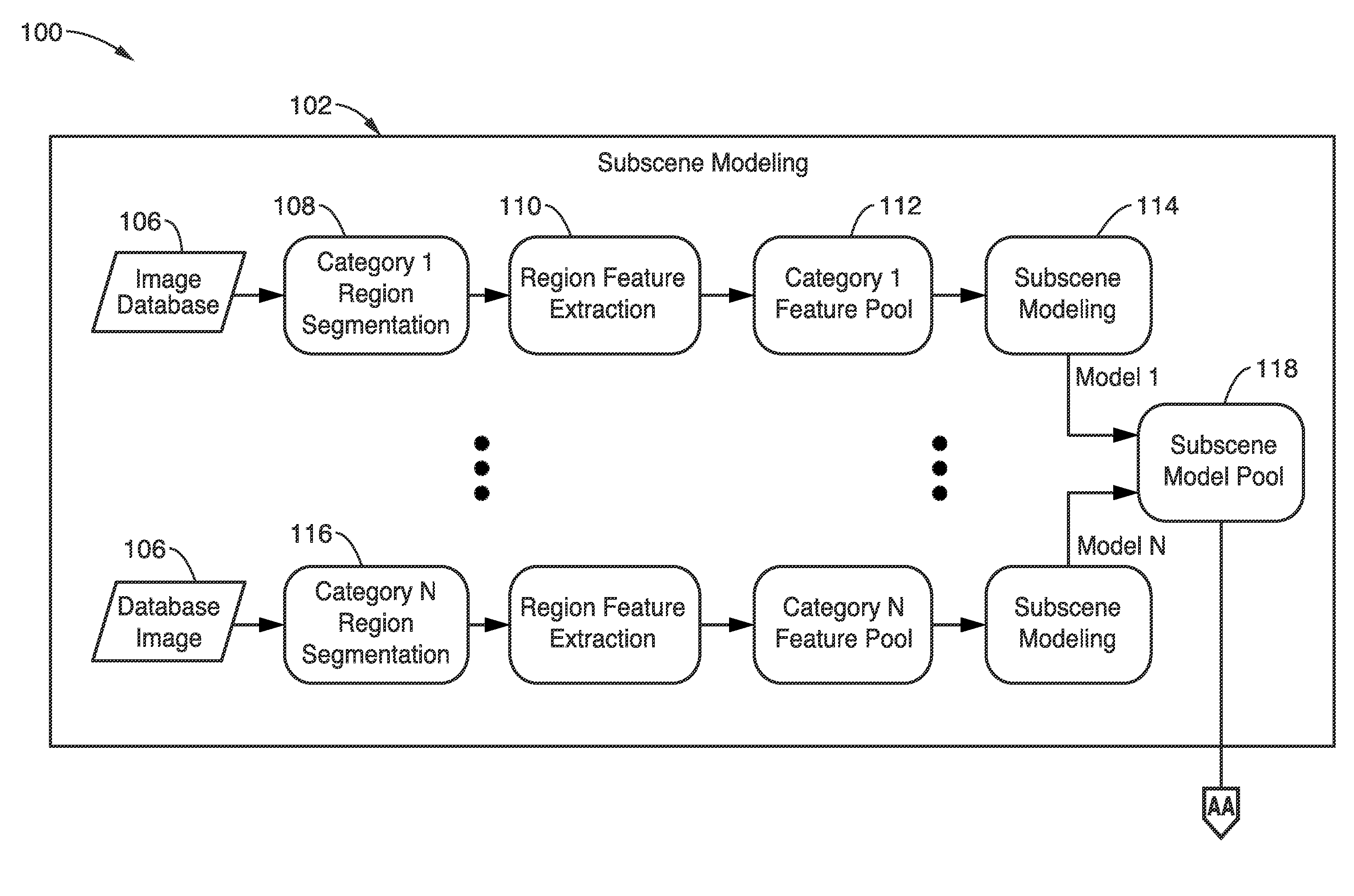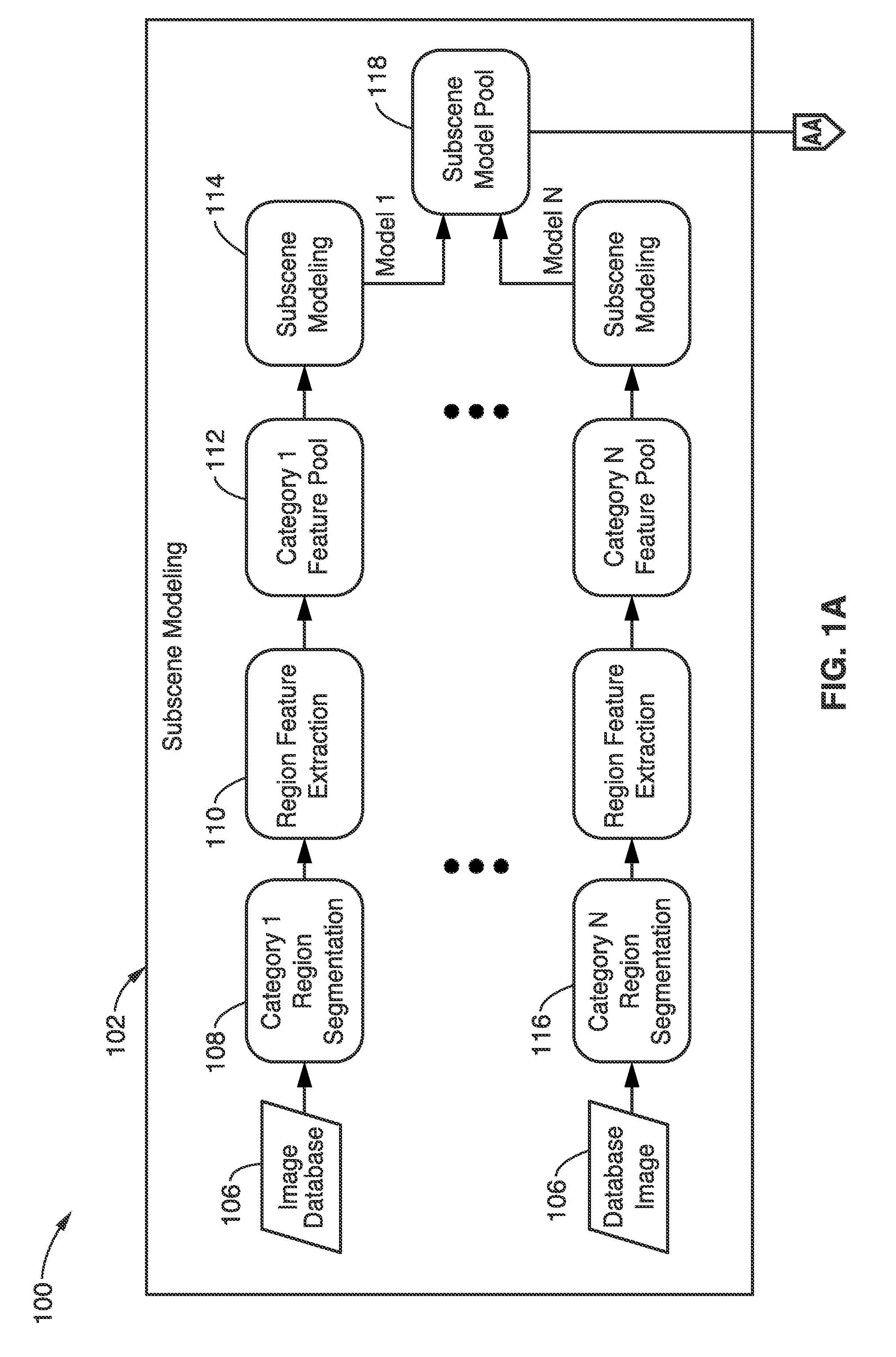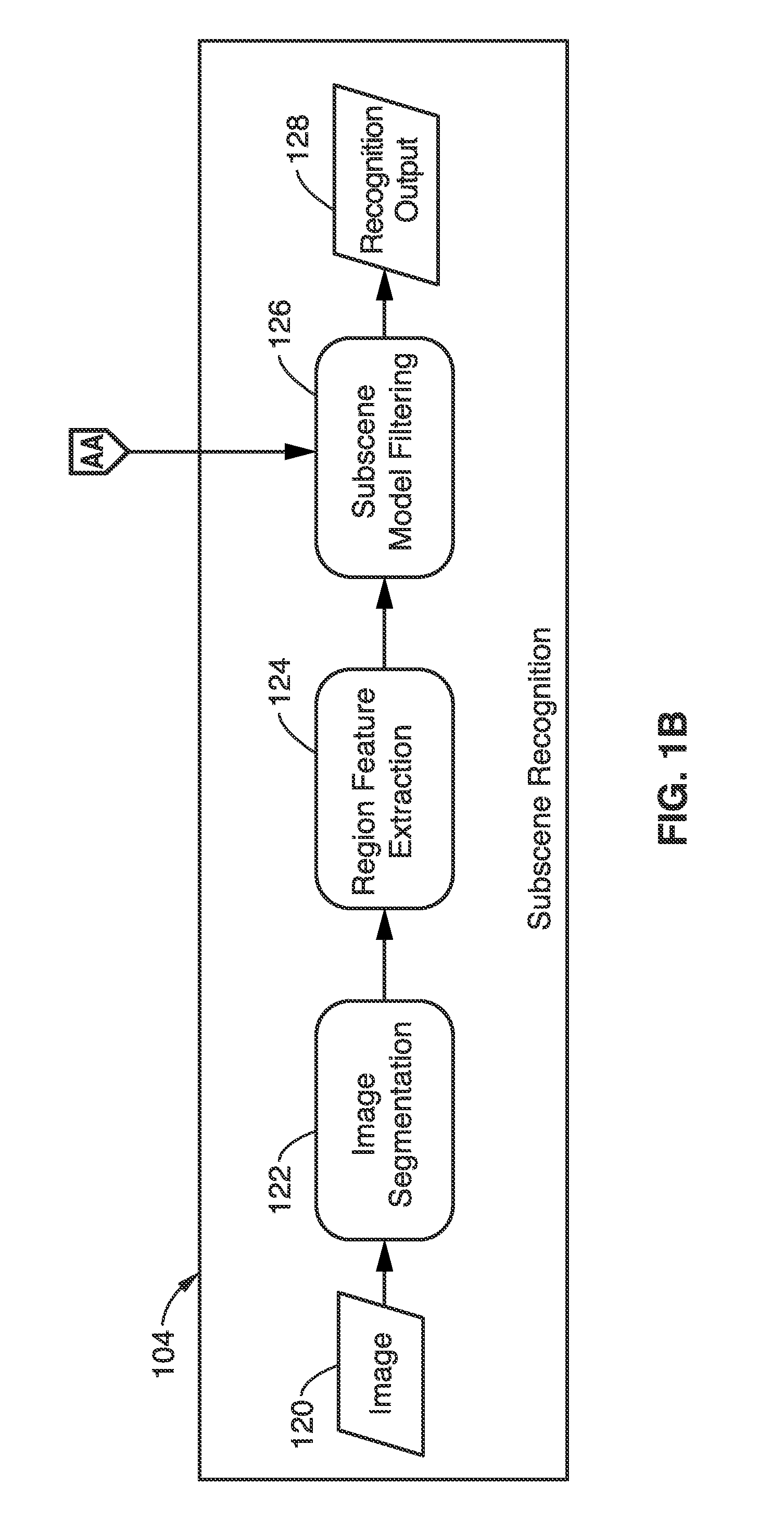Region description and modeling for image subscene recognition
a subscene and region description technology, applied in the field of image classification, can solve the problems of unsolved problems such as the problem of general and the distance between available techniques and customer expectations of non-expert image classification and object detection
- Summary
- Abstract
- Description
- Claims
- Application Information
AI Technical Summary
Benefits of technology
Problems solved by technology
Method used
Image
Examples
embodiment 510
[0102]1. Initialize a number of clusters equal to a small number index m (where ranges from 4≦m≦24 in a current embodiment 510).
[0103]2. Apply the expectation-maximization (EM) algorithm 512 with m clusters on the training data 506 to obtain an mth Gaussian mixture model.
[0104]3. Test 514: 1) the obtained mth Gaussian mixture model on the training data 506 to obtain a training accuracy rate Accuracytraining(m); and 2) the obtained Gaussian mixture model on the testing data 508 to obtain a testing accuracy rate Accuracytesting(m). Calculate the combined accuracy rate Accuracycombined(m) 516 as:
Accuracycombined(m)={Accuracytraining(m)+Accuracytesting(m)-c1*Accuracytraining(m)-Accuracytesting(m)
where c1 is a weighting parameter that ranges from [0-0.5].
[0105]4. Increase the number of clusters m by one (m+1) 518 and repeat the above steps 2-3 until the number of clusters m reaches a maximum threshold (which is 24 in a current embodiment).
[0106]5. Select and output 520 the model that has...
embodiment 1
[0121]2. The apparatus of embodiment 1, wherein said classifying an input image comprises: subscene modeling; and performing subscene recognition.
embodiment 2
[0122]3. The apparatus of embodiment 2, wherein said subscene modeling comprises: segmenting an input image training set from an image database into one or more segmented regions based on an input pool of N subscene categories; extracting a training region feature vector for each of the segmented regions corresponding to the input pool of N subscene categories; and forming a subscene model pool comprising training region feature vectors for each for the input pool of N subscene categories.
[0123]4. The apparatus of embodiment 1, wherein the computer is capable of classifying an image either sequentially or at least partially in parallel.
PUM
 Login to View More
Login to View More Abstract
Description
Claims
Application Information
 Login to View More
Login to View More - R&D
- Intellectual Property
- Life Sciences
- Materials
- Tech Scout
- Unparalleled Data Quality
- Higher Quality Content
- 60% Fewer Hallucinations
Browse by: Latest US Patents, China's latest patents, Technical Efficacy Thesaurus, Application Domain, Technology Topic, Popular Technical Reports.
© 2025 PatSnap. All rights reserved.Legal|Privacy policy|Modern Slavery Act Transparency Statement|Sitemap|About US| Contact US: help@patsnap.com



